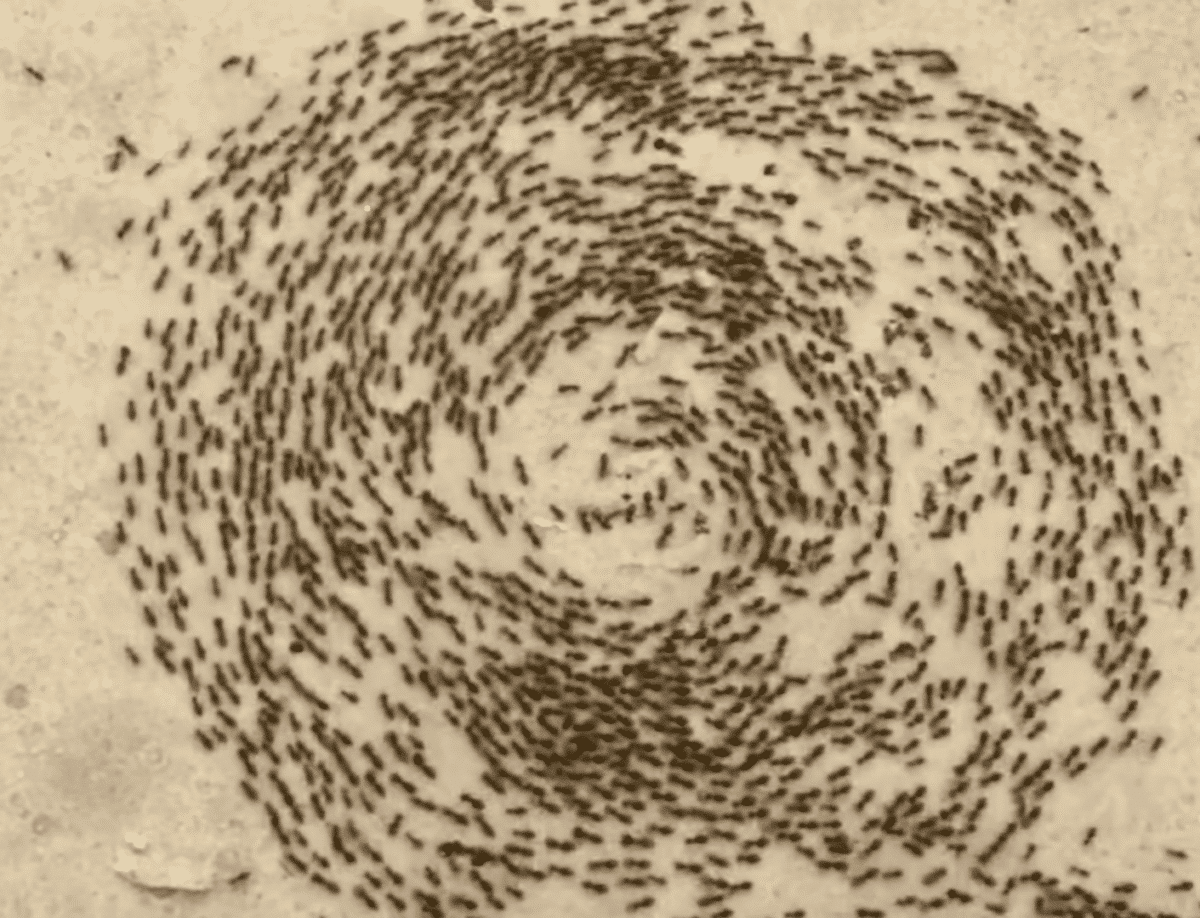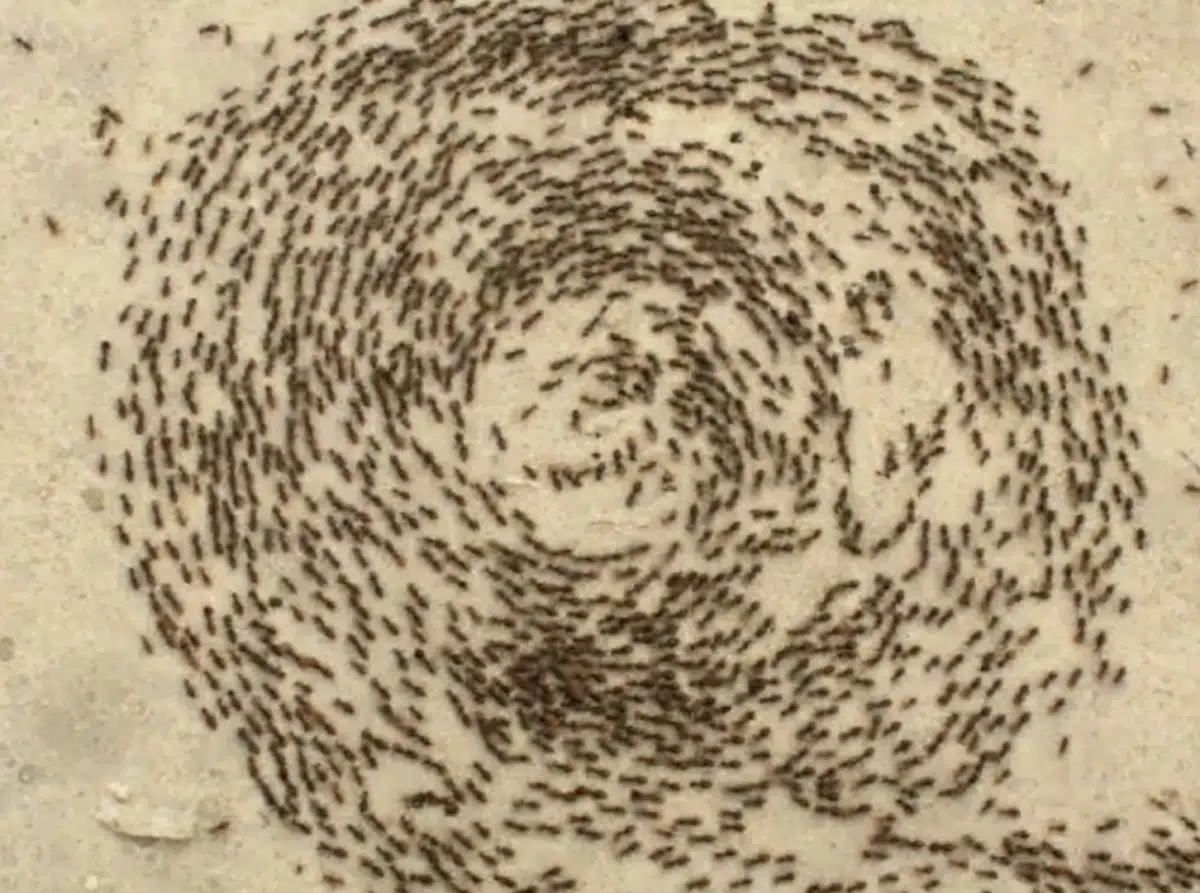Occasionally, ant colonies experience a phenomenon called an ant mill, leading them into a fatal death spiral. This phenomenon involves a group of ants, typically army ants, becoming trapped in a continuous, rotating circle, following each other until they eventually die of exhaustion. The ant mill is a side effect of the self-organizing structure of ant colonies.

Understanding the Ant Mill
Army ants lack permanent nesting sites and are constantly on the move in search of food. As the leading ant travels, it leaves behind a pheromone trail for other ants to follow. This system usually works efficiently, allowing foraging parties to lead larger groups back to food sources. However, when the pheromone trails loop back into each other, the ants end up in an endless circle, following each other to their demise.
The Evolutionary Background
The ant mill phenomenon is not just a random occurrence but is deeply rooted in the evolutionary history of army ants. These ants exhibit a set of behavioral and reproductive traits known as the “army ant syndrome,” which includes obligate collective foraging, nomadism, and highly modified queens. These traits have evolved only once in the history of army ants, suggesting a strong phylogenetic constraint in their evolution.
The Price of Evolutionary Success
While the collective foraging strategy of army ants has been ecologically successful, it comes with the cost of the occasional formation of ant mills. This “pathological” behavior is seen as an evolutionary trade-off for maintaining a highly effective foraging strategy. The sporadic appearance of ant mills is thus viewed as remnants of these ants’ evolutionary path.
Ant Mills in Action
Ant mills have been observed in various settings, from dense forests to human-made environments. The largest ant mill ever recorded was hundreds of feet across, but most are smaller, comprising just a few dozen ants. These spirals can last for hours or even days, with the ants eventually succumbing to exhaustion and death.
In conclusion, the ant mill is a testament to the intricate balance between evolutionary success and its inherent risks. It highlights the remarkable adaptability of army ants and the sometimes unforeseen consequences of their highly specialized behaviors. As we continue to study and understand these phenomena, we gain deeper insights into the wonders of the natural world.
You might also enjoy:
North America’s Natural Treasures: 10 Remarkable Animals
The American Mink’s Remarkable Reversal of Domestication
Watch: The Andean Condor, Royalty of the Andes Mountains
Join our Forum for free today!

- The Bond Between a Wild Baby Bison and Her Rescuer - July 20, 2024
- An Excited Husky’s First Ever Time in Snow - July 20, 2024
- Top 20 Colorful Species To Brighten Your Day - July 14, 2024


